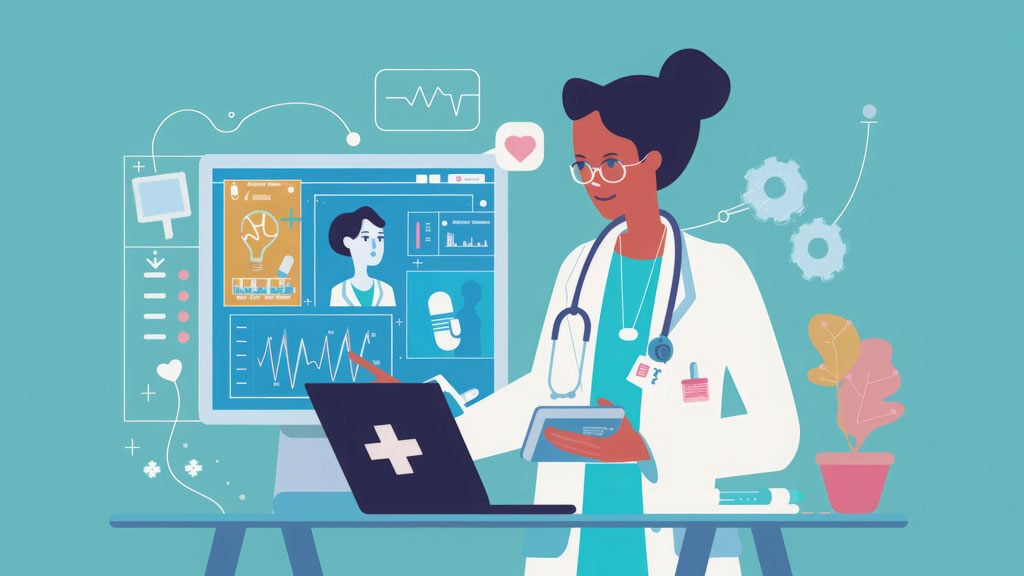1 – There are now 784,626 healthcare businesses in the United States alone, and this figure is constantly increasing.
The US boasts the biggest healthcare system globally, and its increasing business numbers and revenue. According to PolicyAdvice, Patient care accounts for $1.068 trillion or 64% of the US’s healthcare revenue. Meanwhile, inpatient care, which includes skilled nursing rehabilitation and non-surgical dental interventions, makes up 4.49% and 2.98%, respectively.
2 – Healthcare is the third-largest industry in the U.S.
Since 2020, healthcare spending has accounted for 19.7% of the U.S. economy, which was a dramatic increase from 5% just 60 years ago. According to Zippia, this growth represents a range of factors, from new healthcare treatments and services to better coverage, higher utilization, and rising prices across many of the industry’s sectors.
3 – The use of digitalization in healthcare institutions is promoted by 92% of suppliers of various healthcare solutions.
Digitalization in healthcare helps to reduce costs, increase productivity, and avoid time-restricted diagnoses. The rise of digitalization promotion makes it a great time to invest in digital healthcare trends and equipment. According to PolicyAdvice, Experts predict a massive acceleration of digital technology in healthcare, which includes cloud computing, data security, and other tools.
4 – One in seven people (14%) who used telehealth said they would have sought care in an emergency department or urgent care if telehealth was not available.
This survey conducted showcased that access to telehealth effectively kept people out of the emergency department. More than half of those 14% of people who used telehealth had their primary health issue resolved.
5 – The average healthcare employee earns $60,976 a year in the US.
According to health statistics, healthcare is the largest source of employment in the U.S. – employing an average of 1 in 8 citizens. The health industry is also one of the highest paying industries, reaching well above the national average ($47,060).
6 – Healthcare is the largest and fastest-growing industry.
Healthcare is the largest and fastest-growing industry in the U.S. and globally. It is predicted that between 2020 and 2030 employment in healthcare occupations is expected to grow by at least 16%.
7 – As of 2020, one-third of U.S. adults had a telehealth visit for themselves or a dependent.
As digitalization is on the rise, so are telehealth and telemedicine. Telehealth visits are rapidly becoming more popular, and the growth in telehealth users is expected to boom within the years to come.
8 – 86% of physicians believe data interoperability will significantly cut the time to diagnosis.
Physicians recognize the importance of having the right information at the right time. According to Google, virtually all physicians (96%) agree that easier access to critical information may help save a patient’s life and 95% believe increased data interoperability will ultimately help improve patient outcomes. For more information on our telehealth products go to: https://www.innovative-medical.com/telehealth-cart
9 – According to U.S. adults, factors that are important when interacting with healthcare include:
- Ease of access to care (89%)
- Privacy (89%)
- Data security (88%)
- Getting personalized care (88%)
- Having a care provider close to home or work (85%)
- Healthcare costs (85%)
- Coordination among all healthcare providers (84%)
- Being able to monitor their own health (75%)
- Access to a health coach (68%)
10 – The most common purpose for a telehealth visit was a preventive service, prescription refill, or routine visit for a chronic illness (63%).
As virtual visits continue to increase in popularity, they’re becoming more common for simplistic and routine visits.
The healthcare industry will continue to grow and evolve daily, as will the trends, technology, and statistics. It’s important to keep up on relevant news stories, information, and press releases to stay informed and update processes as the industry continues to change and grow.
Sources:
- (Stats Source)
- (Zippia)
- (Bipartisan Policy Center) (SSRS)
- (Policy Advice)
- (Google Cloud)


